Armored lightning. Cruiser II rank Novik. Design features
Representatives of the German company reported that in order for a cruiser in 3 000 t to develop 25 units, it would need machines with a combined power of 18 000 hp. But in order to reach 30 nodes, this power should be brought to 25 000 hp, while the power plant with a machine of such power will have 1 900 - 2 000 tons weight and it turns out that all the other elements of the ship: , weapon, fuel supplies, etc. only a thousand tons or a little more will remain. It is obvious that in such a displacement reserve it would be impossible to create a warship of any acceptable quality. These considerations were very convincing, and Vice-Admiral I.M. Dikov accompanied the German calculations with a note: “I believe that the 25-node motion is sufficient. It is hardly possible to demand more. ”
Interestingly, in this matter the Germans, perhaps, slightly exaggerated paint. The fact is that the actual mass of the power plant "Novik" nominal power 17 000 hp amounted to about 800 t, thus, it can be assumed that 25 000 hp could be provided by bringing the mass of the power unit to 1 150 - 1 200 t, and not 1 900 - 2 000 t. However, it should be noted that this value is not acceptable for the cruiser 3 000 t. is acceptable armed and protected ship so that it does not break on the first wave.
It must be said that nine shipbuilding enterprises responded to the competition, including:
1) German - the above mentioned Howaldtswerke AG (Kiel), F. Schichau GmbH and Fríedrich Krupp AG;
2) English: London and Glasgow Engineering and Iron Shipbuilding Company and Laird, Son & Co (Birkenhead);
3) Italian - Gio. Ansaldo & C .;
4) French - SA des Chantiers el Ateliers de la Gironde (Bordeaux);
5) Danish company Burmeister og Vein,
6) Russian - Nevsky Shipyard with technical assistance of British firms.
However, it should be taken into account that three companies - the British Laird, the French and the Danish - arrived only in January-February of 1899, when the competition was already held, the winner was selected, and a contract was signed with it. Therefore, the ITC familiarized with the proposals of the British and French unless it was only out of general interest, the firms were informed that new orders for ships of this type were not yet planned. As for the proposal of the Danish "Burmeister and Van", big politics intervened here, which is why the case ended with the order of the Boyarin cruiser. But we will return to these events later.
Thus, six applicants submitted their projects to the competition on time: unfortunately, many details remain unknown today. So, for example, historians have not yet been able to find any materials on the British project, and the conclusion that the documentation provided by the British did not at all meet the competitive requirements, is made on the basis that the documents were returned to the British after just 9 days after they were submitted. As far as you can understand, the displacement in 3 000 t was still “cramped” for designers - the project presented by Nevsky Shipbuilding had a displacement of 3 200 t, the German Hovaldtstverka 3 202 t. The strongest armor was the proposal of the Russian plant - the thickness of the armored deck was 30 mm in the horizontal part and on the bevels in the bow and stern, and 80 mm - on the bevel in the areas of machine and boiler rooms. The Italian project was distinguished by its “extreme-thick” among the presented projects of the conning tower - the wall thickness was 125 mm. Well, the most original, perhaps, was one of the options presented by Hovaldtsvorka - while the projects submitted to the competition used the bulk of the "miner" Yarrow boilers (and Thornicroft itself), Belleville. In this case, the cruiser received a slightly larger width compared to the cruiser using Thornicroft boilers, and a greater displacement by 100 tons, but it was assumed that the ship would reach 25 nodes. Obviously, the calculation was based on the fact that the Russian MTC, “in love” with the Belleville boilers, cannot resist such a proposal. But this time, even Belleville did not work: the competition was won by "Shihau", with which 5 August 1898 was signed a contract, under the terms of which the company pledged to submit the cruiser to the tests after 25 months after signing the contract.
Consider what they did.
Displacement
It must be said that the German designers were faced with the most difficult task: the creation of an 25 cruiser in the 3 000 tonnage, and it is very likely that they themselves were not completely sure about the successful solution. Therefore, the course was taken not only for the strictest discipline of weight, in order to avoid any overload, but also for the constructive relief of the cruiser to the fullest extent so that, according to the project, to provide him with a displacement of less than the contractual value of 3 000 t. , at least, strange decisions: but blaming the Germans for this alone would be wrong, since the MTC seemed to hold the same positions and only rejoiced at the utmost relief of the ship. The fact is that, despite the conclusion of the contract at the beginning of August 1898, the coordination of the cruiser’s drawings was delayed simply ugly - in fact, the construction of the ship began almost a year and a half after the conclusion of the contract - in December 1899! True, this delay was influenced not only by the slowness of the MTC, but also by the delay of steel mills in the supply of metal, but there is no doubt that the MTC played the main role in the delay.
Looking ahead, if we count from the start of work, the cruiser was built very quickly - 2 May 1901, the ship was already completely ready and went to factory tests, while less than a year and five months passed since the start of construction. A similar period for the Varyag under construction in the USA was approximately 2 of the year - the exact date of commencement of work on this cruiser is unknown, but presumably this is August 1898, and for the first time at sea the cruiser came out 9 July 1900. But comparing the construction time of the Varyag and “Novika” should not be forgotten that “Varyag” was still more than twice as large as the brainchild of “Shihau”. If we take for comparison domestic shipyards, then from the start of construction of the almost same-type Novik cruiser Zhemchug to the first launch of the cruiser into the sea for factory tests, 3,5 of the year passed (19 February 1901 of August - 5 August 1904) ).
When Novik entered its first tests, its normal displacement was almost 300 tons lower than the contract stipulated. Oddly enough, its exact value is unknown, because the data of Russian-speaking sources have small discrepancies. So, for example, according to A. Emelin, the normal displacement was 2 719,125 t, but does not specify which tons are in question, metric or “long” English, having 1 016,04 kg. But in the monograph by V.V. Khromov states that such a number consisted of 2 721 “long” ton, that is, in the metric tons the displacement of the “Novik” is 2 764,645 t. But in any case, this is significantly less than indicated in the contract.
Chassis
From the point of view of structural strength, perhaps, we can say that the Germans managed to literally walk along the edge, easing the hull of the ship as much as possible without sacrificing its navigable qualities, and perhaps even stepping over this edge. In the subsequent ships of the series, built on the model of Novik in domestic shipyards, the hull was deemed necessary to reinforce - on the other hand, Novik quite confidently withstood the storms, and the transition to the Far East, and military operations against the Japanese without much criticism.
Typically, the claim to the project put the lack of a double bottom, brought to the level of the lower bevels of the armor deck for most of the hull. As an illustration, see the cross section of the Bogatyr armored cruiser
And "Novika"
On the one hand, the claim is certainly fair - Novik’s double bottom really rose to the level of the armor deck only in the extremities. But on the other hand, it is necessary to take into account the limitations of this form of protection - in fact, a double bottom protects only against a leak in the casing and grounding, and the second only if the external casing has been damaged only. As for combat damage, a double bottom against them is almost useless. In addition, the presence of a double bottom provides somewhat greater body strength. But, as we know, the strength of the Novik’s hull did turn out to be acceptable, and as for navigation accidents, a lot depends on the combat use areas of the ship. For example, in the Baltic it is extremely important, but in the Pacific the same American destroyers, although they did not have a double bottom, but did not suffer much from it. We can also recall the British experience - after the First World War, they preferred to build their destroyers without a double bottom, which allowed them to "squeeze" into narrow hulls of the car and boilers of maximum power, while the safety of ships was ensured by numerous watertight bulkheads. It was on this principle that the Novik was designed - it had 17-s waterproof bulkheads from the bottom to the armor deck, and the 9-th - above the armor deck! The cruiser "Bogatyr", for example, had 16 watertight bulkheads, of which three continued above the armor deck. Thus, despite the absence of a continuous double bottom, the Novik was nevertheless a very resistant ship to flooding.
But on the other important flaw of the Novik corps, unfortunately, often do not pay attention. Of course, no one has the right to reproach the German designers that their offspring had a long and narrow body, the ratio of length to width of which was very large. Thus, for Bogatyr, with a maximum length of 132,02 m and a width of 16,61 m, it was 7,95, and for Novik, with a maximum length of about 111 m (106 m, indicated in the sources, it is the length between perpendiculars) - almost 9,1. Without a doubt, a similar ratio was absolutely necessary to achieve extremely high for the time speed of 25 nodes. However, it also predetermined one of the most significant drawbacks of the ship - a strong side roll, which made the Novik a very unstable artillery platform. At the same time, this disadvantage could have been somewhat offset by the installation of lateral carinae, but those could adversely affect speed, and, apparently, this is why Novik did not receive them. BUT. von Essen, having already taken command of the cruiser, wrote in a report about such keels:
As for Novik’s seaworthiness, it is not easy to give an unambiguous assessment. On the one hand, it would be difficult to expect a lot from a small ship built for the sake of speed. And indeed, when in the winter Mediterranean “Novik” landed in a storm, then with a passing wave the ship strongly “felled” - the roll reached 25 degrees, while the frequency of the sweeps reached 13-14 per minute. However, when the cruiser turned around and went against the waves, then, according to N.O. von Essen: “he was doing fine, not taking water at all with his nose, and experiencing a comparatively slight roll”.
Power plant
In order for the cruiser to develop 25 units, three four-cylinder steam engines with rated power 17 000 hp were placed on it. and 12 water tube boilers manufactured by the Schihau company (in fact, slightly upgraded Thornicroft boilers). In this case, in the direction from the bow to the stern, first two boiler rooms were located, then the engine room, with two machines, the third boiler room and behind it the second machine room (with one machine). This arrangement virtually eliminated the possibility of failure of all vehicles as a result of a single combat damage, and gave Novik its easily recognizable silhouette (the third pipe is separated from the second and third).
I must say that the Schihaw boilers of our specialists left an ambivalent impression. On the one hand, their merits were noted, but on the other hand, disadvantages were also noted. So, access to the lower ends of the hot-water pipes was pretty difficult, and the pipes themselves had a greater curvature, contributing to the formation and accumulation of scale. As a result of the MTC, during the construction of “Pearls” and “Emerald”, it chose to return to the more familiar Yarrow boilers. As far as this was a well-grounded decision, we will consider later when we analyze the results of Novik’s combat service.
In the meantime, let's say that the cruiser is on the acceptance tests, with the power of the 17 789 HP machines. at 163,7 rpm, on five runs, developed the speed of 25,08 knots. This did not meet the contractual requirement to hold the 25 hub for the 6 hour run, so one can say that the German company, despite the full relief of the ship, could not fulfill the contract requirements. But, in any case, at that time, the Novik was unambiguously the fastest cruiser in its entirety. history ships of this class - no cruiser of the world has never developed a similar speed.
However, already on the test revealed an unpleasant defect of the ship - due to errors in weight calculations, "Novik" had a fairly pronounced trim on the nose. At the time of this test, the Germans managed to “trim” - the ship did not have a trim on the bow, but on the stern: the draft was 4,65 m, and the stern was 4,75 m. However, during the daily service in Port Arthur, these figures were different, reaching 5,3 and 4,95 m, respectively, that is, the trim on the nose was up to 35 cm (at the transition to the Far East it was less - somewhere about 20 cm). Sources claim that such a difference caused a strong drop in speed - in Port Arthur, 23 on April 1903, the cruiser at 160 rpm was able to develop only 23,6 knots.
However, here, most likely, the question is not so much in the trim as in the operational overload of the ship - after all, the ship, it turns out, sat on 65 cm, and stern - on 25 cm deeper than in tests, when the cruiser was provided with its normal displacement. The fact is that during the tests that took place on 5 on July 1901, when Novik was not overloaded, he developed 24,38-24,82 ties during two miles of 15,5 miles, while further it turned out that the distance was incorrectly measured , and in fact the cruiser had a great speed - it probably exceeded 25 nodes. It was noted that during the race the cruiser was strongly sitting nose. Unfortunately, the author does not have data on either the ship’s displacement during these trials, nor information about the size of the trim, but, in all likelihood, in this case, the latter did not affect the cruiser’s speed.
I must say that the ability of the ship to develop 23,6 bonds. in Port Arthur is a quite decent indicator - usually ships in daily operation are still unable to show the test speed when tested, losing to the node 1-2. Let us recall “Askold”, which, having shown on tests the speed of more than 24 knots, in the same Arthur confidently kept only the 22,5 node.
As we have said, the normal supply of coal was 360 tons, full - 509 tons, while the contract provided for a range in 5 000 miles on 10 nodes. Alas, in fact it turned out to be much more modest and made only 3 200 t at the same speed. The reason, oddly enough, lay in the three-shaft power plant, the use of which on the battleships of the Peresvet type turned the latter into "coal-eaters." But if at Peresveta, planning to go with the economic move on the middle car, they didn’t think at all of the resistance that two non-rotating screws of three would provide, then at Novik it was supposed to go with the economic move under the two extreme machines. However, the principle of the problem remained the same - the middle screw created a lot of resistance, which made it necessary to drive the third car anyway, even at low speeds. The only difference, perhaps, was that, for Peresvetov, the necessity of a mechanical transmission is usually indicated, with which an average car could drive not only its own, but also neighboring screws, while for Novik, apparently, only the uncoupling mechanism of the screw with the machine.
Reservation
The basis of the armor protection "Novika" was "karapasnaya" armored deck of a very decent thickness. In the horizontal part, it had 30 mm (20 mm of armor on 10 mm steel bedding) and bevels of 50 mm (35 mm of armor on 15 mm steel). In the middle of the hull, the horizontal part was located in 0,6 m above the waterline, the lower edge of the bevels adjoined the board at 1,25 m below the waterline. At a distance of 29,5 m from the ship's stem, the horizontal part gradually lowered to 2,1 m below the waterline directly at the stem. At the stern, the deck also made a “dive”, but not so “deep” - the decline began in 25,5 m from the stern stem in contact with the last one in 0,6 m below the waterline. I must say that the cruiser steam engines were too massive and did not fit under the armored deck. Therefore, the cylinders protruding above it had additional protection in the form of vertical windings 70 mm thick.
Directly above the bevels were coal pits, creating additional protection. Thus, the only thing that distinguished the Novik for the worse from other, larger domestic armored cruisers was the lack of a cofferdam at the waterline level. The latter, although it was not able, of course, to somehow protect it from a direct hit by an enemy projectile, could still significantly reduce leaks arising from close gaps.
The rest of the ship’s armor protection was extremely limited - the 30 mm armor defended the cabin, there was still a pipe of the same thickness as the control wires (including the power steering) went under the armor deck. In addition, 120-mm and 47-mm guns had armored seats. On the one hand, of course, such protection was very far from ideal, because it defended little calculation from fragments, unless the enemy projectile exploded in front of the weapon - similar in area shields of the Askold armored cruiser received very critical reviews that participated in it in combat 28 July 1904 officers. But, on the other hand, such shields were noticeably better than nothing, and one can only regret that the nose gun shield covered the view from the conning tower to such an extent that it had to be removed.
In general, the following can be said about the Novik's armor protection. Abstracting from the depravity of the armored deck scheme (especially since on a high-speed ship less than 3 000 t with a displacement to provide vertical booking of the board was not possible), it should be noted that on our cruiser it was very good. The thickness of the armor deck was quite capable of providing protection from 152-mm projectiles at a distance of approximately from 20 cables and further, and in this respect was not much less than twice the size of the armored cruisers than Novik. But, of course, the 30 mm of the conning tower and the tubes with the drives looked clearly inadequate, at least 50 mm would be necessary here, and 70 mm armor would be better, and it cannot be said that its use would lead to any fatal overload. Another disadvantage of the Novik reservation scheme was the lack of armored chimney protection, at least to the level of the upper deck.
Artillery
The “main caliber” of the Novik armored cruiser is represented by six Kane guns 120-mm / 45. Oddly enough, the information about these tools is very fragmentary and contradictory. It is reliably known that the projectile of this gun (the old model) weighed 20,47 kg, and the gun had unitary loading (that is, the "cartridge" from the projectile and charge was charged immediately). The KNE 152-mm / 45 gun initially also had unitary loading, but it was almost immediately transferred to a separate one (the projectile and the case were charged separately), which was quite justified by the large weight of the projectile. At the same time, the weight of the 120-mm / 45 gun shot apparently did not exceed 30 kg (according to Shirokorad the case weight was 8,8 kg, respectively, the weight of the shot - 29,27 kg), that is, the 120-mm shot turned out to be even lighter than the lightweight projectile 152-mm / 45 Kane cannon, which had a mass 41,4 kg.
Judging by the available data, high-explosive and armor-piercing shells 120-mm / 45 guns had the same weight, but it also relied on cast-iron and segment shells, the mass of which, unfortunately, is not known to the author. Also, alas, the content of the explosive in the projectiles is also unknown.
The initial velocity of the 20,47 kg of the projectile was 823 m / s, but here the firing range is one more puzzle. So, A. Emelin, in his monograph on the Novik cruiser, cites data that the maximum angle of elevation of Novik's guns was 15 degrees, while the range of 120-mm / 45 guns reached 48 KBT. However, according to other sources, the maximum angle of elevation of this weapon was 18 degrees, while the “old” projectile firing range was 10 065 m or more 54 kbt. The scheme of the deck 120-mm / 45 Kanet gun, cited by A. Emelin in the monograph mentioned earlier, finally confuses the matter, because according to it the maximum angle of elevation of this gun is 20 degrees.
Thus, the only thing that can be argued for sure is that 120-mm / 45 was losing in firing range of six-inch Kane, but it is rather difficult to say how much.
Naturally, the 120-mm / 45 gun was inferior to a six-inch by the power of the projectile - more than doubled, but the weight of the deck “hundred-five” was almost twice as low as the 152-mm / 45 gun (relative to 7,5 and versus 14,5). But in the rate of fire and the ability to maintain an intensive rate of fire for a long time 120-mm / 45 apparently exceeded 152-mm / 45 - simply because of unitary, rather than separate loading and lower projectile weight and charge.
The standard 120-mm / 45 ammunition for the guns of the Novik cruiser is unknown, but, taking into account the information provided by N.O. von Essen about the stockpiles of a cruiser before going to the Far East, it can be assumed that the gun ammunition consisted of 175-180 shots, of which 50 were high-explosive, and the rest (approximately in equal proportions) armor-piercing, cast-iron and segment.
In addition to the 120-mm / 45 guns, the cruiser contained six more 47-mm cannons and two single-barrel 37-mm artillery systems (on the wings of the stern bridge) and two 7,62-mm machine guns on Mars. In addition, the cruiser was, of course, the 63,5-mm Baranovsky paratrooper cannon, which could be placed on barbecue, and 37-mm guns (apparently two) for arming the steamboats. All this artillery, with the possible exception of the landing gun, was of practically no significance and we will not consider it in detail.
To measure the distance of the ship, the Mirometers of Lyuzhol-Myakishev regularly relied, but in Port Arthur the Novik received the Barr and Stroude range finder.
In the prewar years, domestic armored cruisers were equipped with a centralized fire control system. The latter was a rather complex electrified system consisting of giving and receiving dials, which allowed to transfer a bearing to the target from a conning tower, a type of projectile to be used on it, short fire, attack, shot, as well as distance to the goal. Unfortunately, nothing of the kind at Novik was installed - it was supposed to carry out fire control using “old-fashioned” methods - sending orderlies, drumming, and commanding the nose-gun was supposed to be directly from the conning tower.
As we said above, due to the design features aimed at achieving a record speed, the Novik was not a stable artillery platform. Lieutenant A.P. Shter, performing the duties of an artillery officer of the cruiser, indicated in the report:
We also note that N.O. von Essen was with his. artillery officer was quite agree.
Mine armament
According to the original design, the cruiser had to have 6 * 381-mm torpedo tubes with 2 ammunition in Whitehead mines per unit, two missile-mine apparatus for steam boats, as well as 25 anchor mines. However, in the process of coordination and construction, it has undergone a fair reduction. So, due to the extreme narrowness of the compartments at the stem, it was decided to abandon the installation of the bow torpedo tube, so that, in the end, there were five of them. All of them were above-water, while the bow pair was located in the hull 1,65 m height from the waterline at the ship’s bow in the ship’s nose (on the side projection of the ship, lancesports are visible under the barrel of the nose 120-mm gun). The second pair of mine apparatuses was located closer to the stern, in the region of the third chimney just below, in 1,5 m from the waterline. Both pairs of "pipes" were placed on hinges, were mobile, and could be induced: nasal on 65 degrees. in the nose and 5 hail. in feed, feed - on 45 hail. in the nose and 35 hail. in the stern (from traverse). The fifth torpedo tube was fixed and located in the stern of the ship.
From the placement of mine barriers and mine apparatus for steam boats eventually refused. The Novik steamboats were too tiny to be able to make up a mine raft, and without this the storage of mines on it did not make much sense. Therefore, their number was first reduced to 15, and then they were abandoned altogether, and the mine apparatus of the boats were removed at the same time.
In general, the mine equipment of Novik is difficult to recognize as satisfactory. The 381-mm mine project from the Lessner plant of the 1898 sample had a relatively small explosive charge - 64 kg, but, most importantly, regrettably small range - 600 m with a speed of 30 knots. or 900 m with a speed of 25 knots. Thus, in order to get into someone, the cruiser needed to go very close, at a distance less than 5 cable - of course, in a combat situation it was hardly possible. But the placement of these torpedoes above the armor deck, without any protection in battle could lead to a catastrophe.
To be continued ...
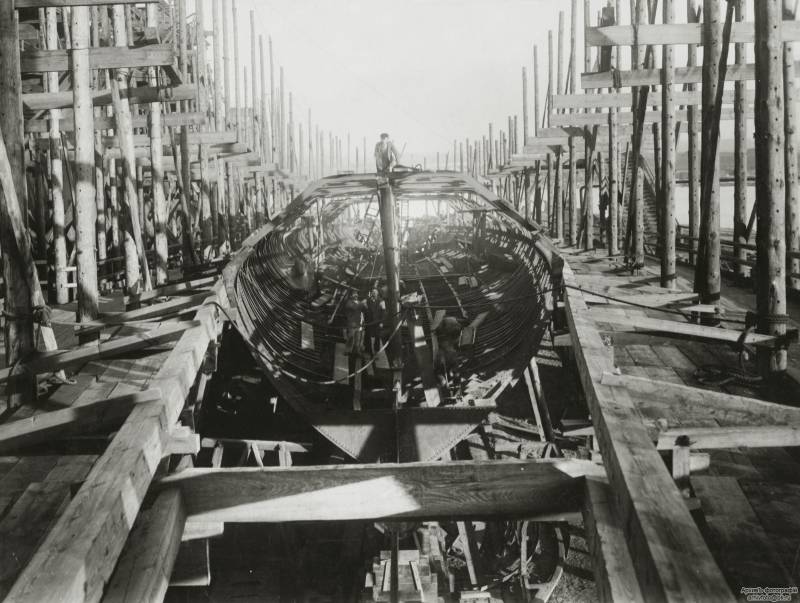
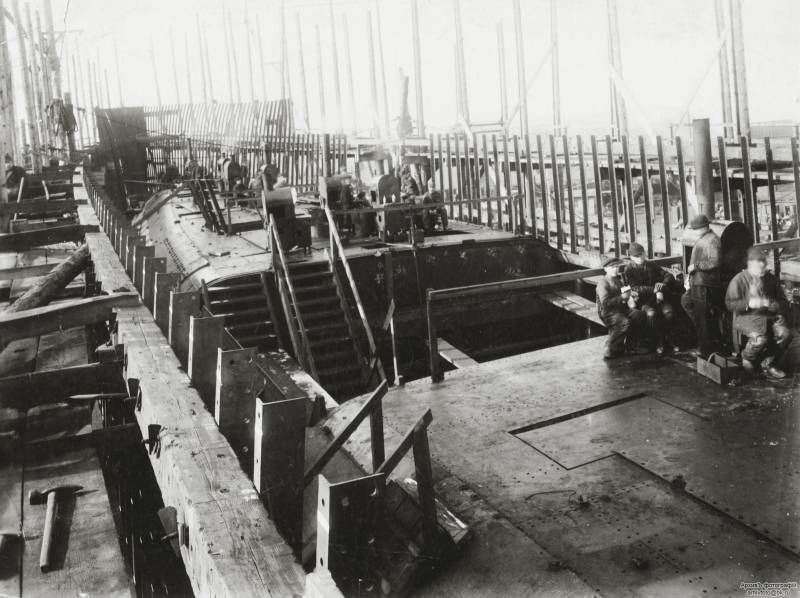
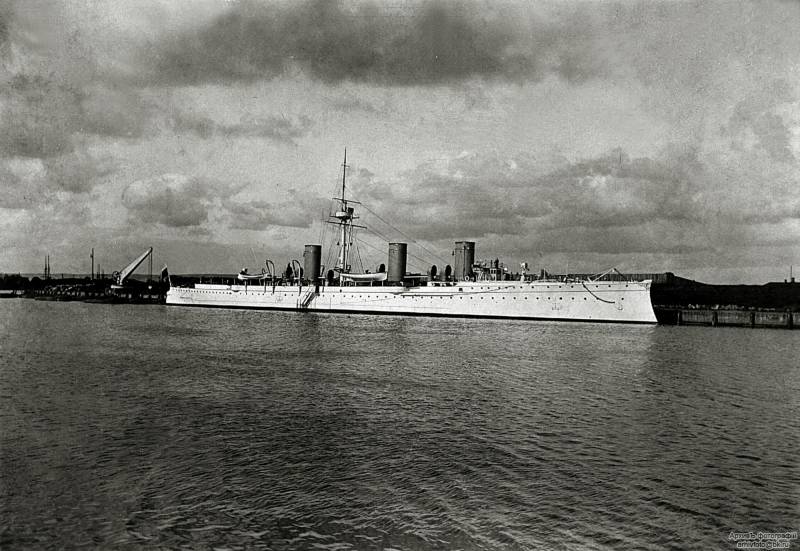
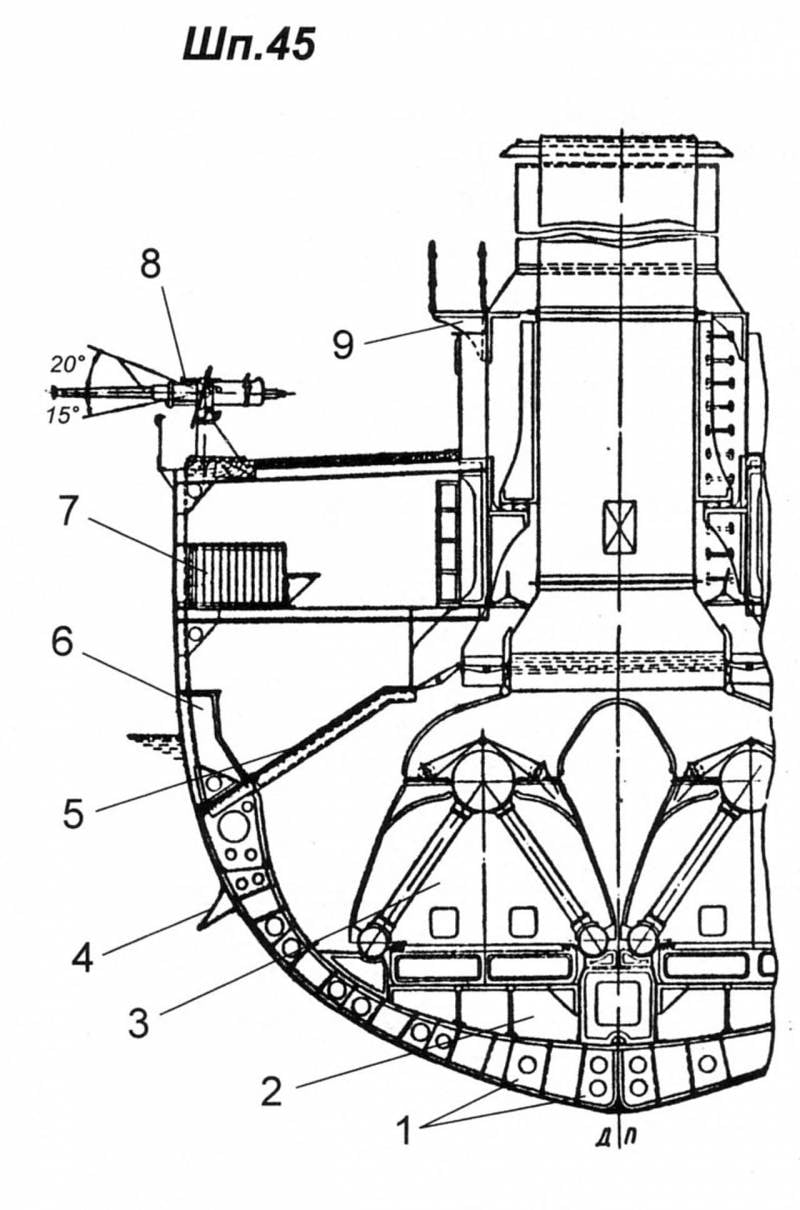
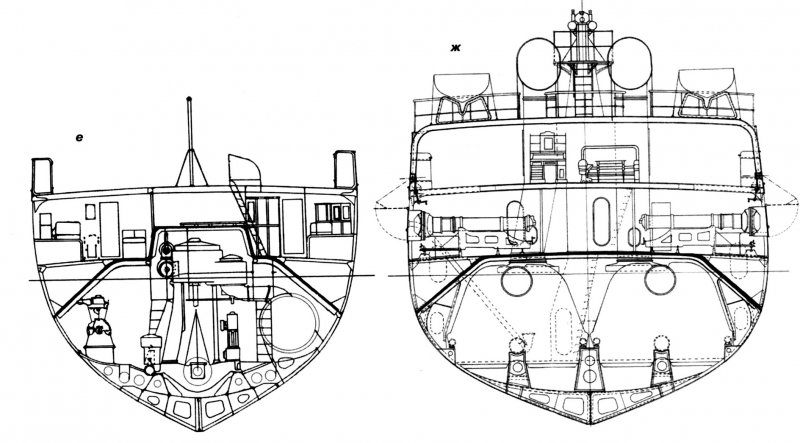
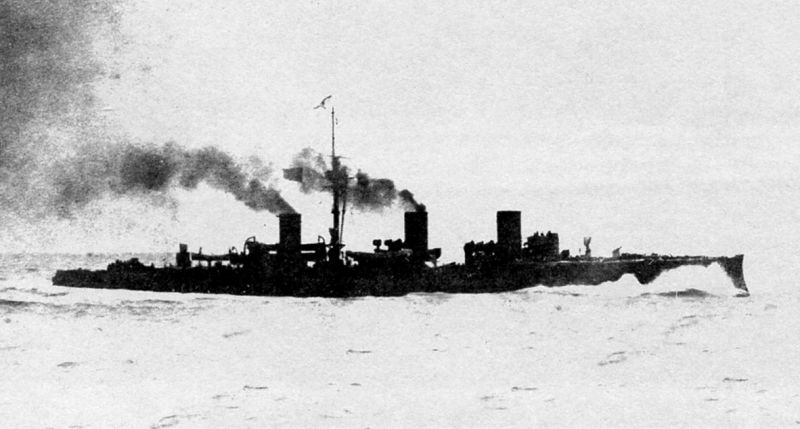
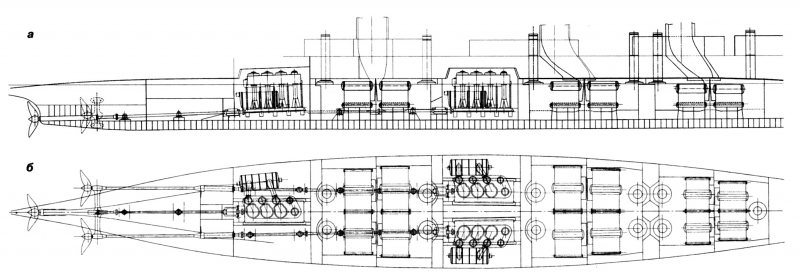
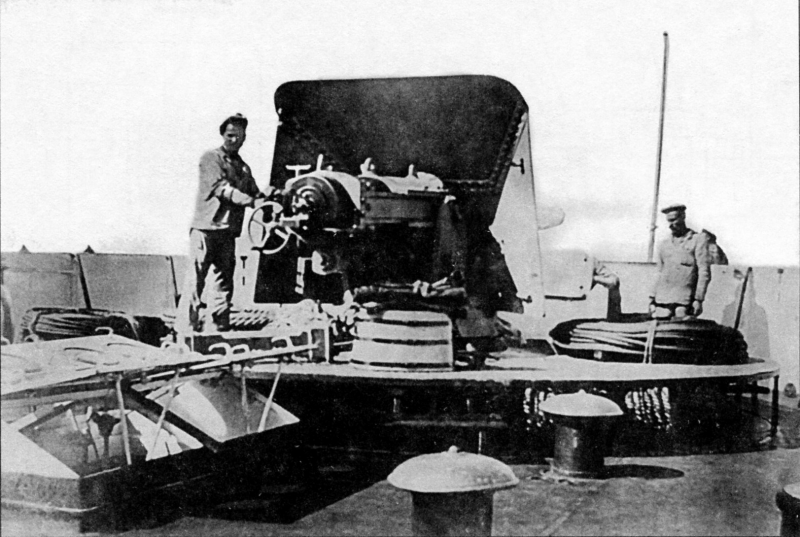
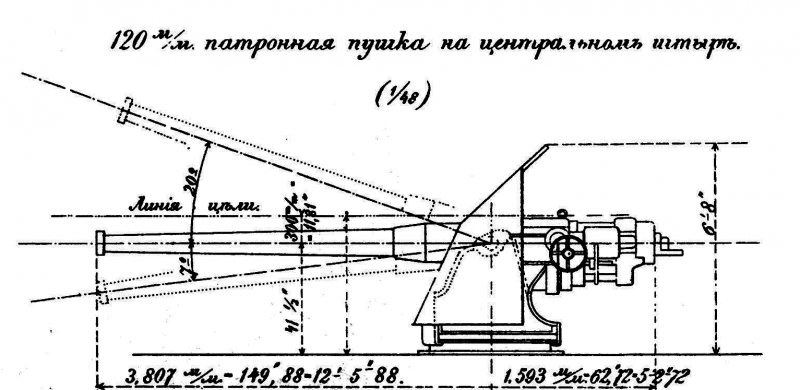
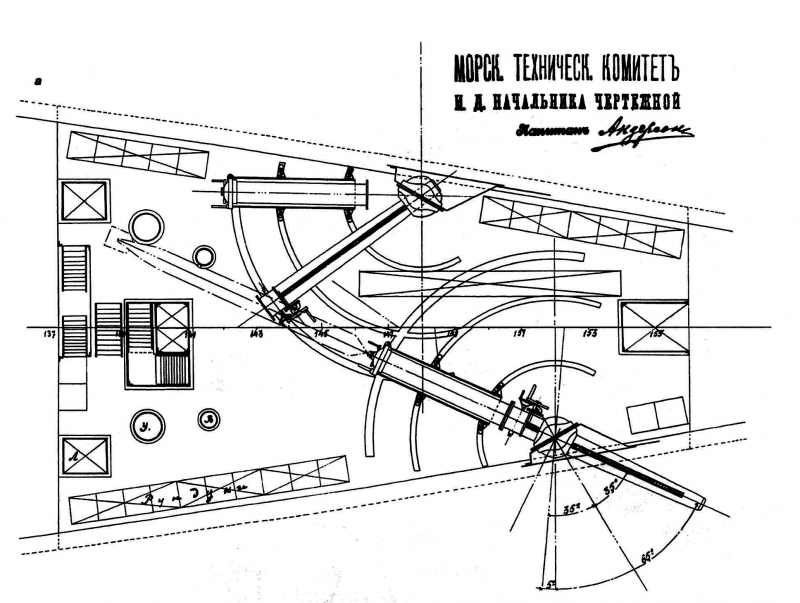
Information